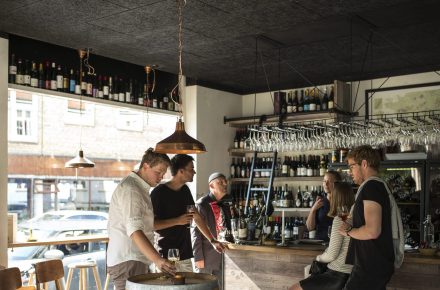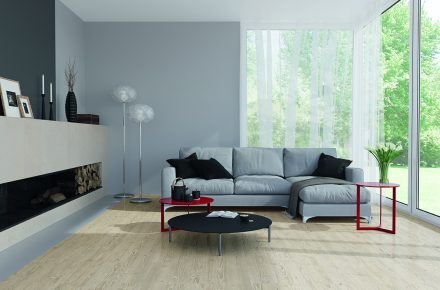Circular opportunity in the future
Circular economy is currently a very popular word in the design industry. To what extent must design be rethought so that products can be future-proof?
Ready for circulation in the future? Is our garbage the raw material of tomorrow? The claim to keep important raw materials in circulation leads to new product developments and requires a new way of thinking in design. Designers have a special role here – they are the interface between consumer and company. Already at the design stage, designers have to be aware of their responsibility when choosing materials and the resulting production processes, right through to their further exploitation, and take sustainable criteria into account.
To think about product developments from the end is a change of direction that still seems new. What potential arise for the design process?
Leading products in continuous cycles and not letting waste arise are two essential aspects of an ideal circular economy. Design can be considered as the heart of a circular economy. The goal of cycles is to preserve the value of products, their components and materials.
The great challenges of our time require looking beyond the boundaries of isolated topics and looking at the big picture.
Today we are faced with the challenge of protecting and preserving our living environment and find that we have so far no significant solutions ready for the diverse tasks. We know that time is pressing and it is difficult for us to find ways outside our usual structures and habits.
So far, we have not been able to drastically reduce global warming, waste generation or raw material waste. At the same time, our delicate efforts to conserve clean water and air, as well as biodiversity, have not yet achieved successful results.
We are experiencing a shift in socio-cultural values, as well as rapid technological advances. Through digital transformation, we are in the midst of a transformation in how we develop, design, manufacture and use things. This has profound effects on consumer behavior and our lifestyle and the associated demands on industry and design.
The old system of cheap mass production of identical products is increasingly being replaced by individualized, digital production – online marketplaces, open source design and social networking.
So far, there was a clear division: Small factories produced individual products, the industry produced in mass. However, through digital manufacturing, manufactories are already able to produce products that were previously only produced by large factories. So it will come to changes in our usual corporate landscape.
What we want
“The future depends on what we do today,” Mahatma Gandhi once said, and consequently we should ask ourselves the question of our future.
The workshop participants asked for their ideas and wishes, how they imagine their future and what seems important to them, showed similar results as the index of values 2018. Again, nature and health were the top priority.
What we do
We love the untouched nature. Nature and environmental protection are generally valued goals. But at the same time, we are wasting the resources of nature and destroying the planet. When designing our immediate environment, we use poisons. Every third person in the Western world has allergic problems. Over 40% of all children have allergies. It used to be only 2-3%.
Why are we doing this?
Looking at the status quo of our economies, we find that there has been no change in our thinking pattern since industrialization: we take, we consume, we throw away. With this logic, products are developed and designed.
The global economic system has been built linearly since the Industrial Revolution: lifestyles are thus geared to the consumption and shortage of goods, resulting in the sequence of extraction, production, disposal in supply chains. The underlying manufacturing model is thus one-way: natural resources are used to produce mass-produced goods that are purchased and often disposed of after a single use. As a result, our consumption of resources and energy has doubled in the last 30 years.
Faster | Higher | Further
Growth is needed to keep this linear economic model of mass production and mass consumption going. This in turn requires acceleration.
Consequently, we do more in less time and at the same time we have less time per action. It gets faster and produces more. We have less time in design, manufacturing, decision-making, selection and use. This results in more goods with a shorter half-life. Contacts and networking are increased as well as multiplied options for action.
Through mass production and consumption, resource and energy consumption are rising rapidly. Therefore, it is essential to look for the solution in the system. Only if we succeed in creating a sustainable market, which also meets economic aspects, it will be possible to make the change. At the same time, the urgently needed restructuring of our economic system will not be possible without behavioral changes.
Better | Different | Less
There are three basic approaches in the sustainability debate, which are viewed as a solution overall:
Efficiency is aimed at a more productive use of raw materials and resources, often achieved through technical innovation. Efficiency gains often lower the cost of products or services. This can lead to changes in users’ behavior: they consume more – the initial savings are partially reversed. The so-called rebound effect begins. So we consume more energy despite more energy efficient products. Examples show that efficiency does not necessarily lead to reduction.
Consistency seeks alternative technologies and materials that are better for nature and the environment than previous ones, and seeks to close cycles from manufacturing, through use and recycling, to reuse. Innovations and an extended view within product development are prerequisites for consistent products. Businesses are no longer focused on maximizing profits or cutting costs by increasing supply chain efficiency. Rather, the focus is on the redesign and restructuring of product service systems that ensure future viability and competitiveness.
Sufficiency does not try to satisfy existing needs with less or other resources, but rather questions the needs themselves. How much is enough, however, requires a social debate on values, which is still far from happening.
Dependence on raw materials
Germany is a low-commodity country and dependent on raw materials from other countries. The extraction and transport of raw materials worldwide are becoming more and more expensive and inevitably more expensive due to scarcity.
This can be well explained by architecture and the construction industry. With around 60% resource consumption, 50% waste production, 35% energy consumption and 35% emissions worldwide, building design is considered to be the main approach to sustainable development. In resource-poor Germany, we are surrounded by over 50 billion tons of valuable materials that are installed in buildings. With an annual growth of 10 tons per inhabitant, the use of resources is reflected here. The debate over renovation and conversion instead of demolition is overdue.
Consequently, it would be obvious in the construction phase of buildings to minimize the use of materials already in the planning phase and to consider how the used materials can be recycled once.
But to bring materials back into the cycle, it requires a pure-grade use. This is shown by example


